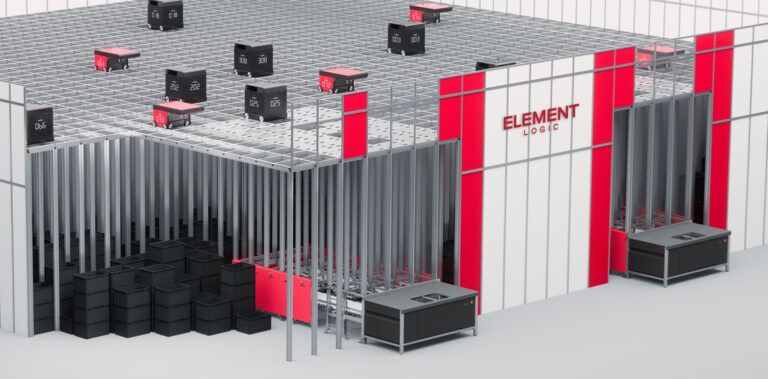Summer means fun in the sun, family backyard cookouts, and maybe a trip to the beach. Those who work within the e-commerce industry also know that summer is an important time to optimize warehouse operations for the next peak season. Whether that is Back-to-School or holiday shopping, certain industries are experiencing increased order volumes starting now!
We are going to look at 5 different strategies that you can implement immediately to optimize your business’s summer shopping operations.
Streamline Order Fulfillment for Faster Turnaround Times
By improving the efficiency of order fulfillment, businesses can drastically reduce delays with deliveries, enhance the customer experience and their general satisfaction, as well as increase a business’s operational productivity. Below are a few examples of different strategies to be employed to streamline order fulfillment.
An efficient order picking system is essential for optimizing warehouse operations and ensuring accurate order fulfillment. Order picking refers to the process of selecting items from your business’s inventory to fulfill customer orders. Through a combination of technology integration, order consolidation, training and standardization, and performance monitoring, you can vastly improve the accuracy of picking rates and ultimately enhance the customer experience.
The importance of cross-training employees for increased flexibility, as well as reducing bottlenecks, cannot be overstated. This involves providing them with the skills and knowledge to perform multiple tasks or roles within an organization. This approach promotes flexibility for your business while also reducing congestion by making sure that there is a workforce capable of handling various responsibilities and effectively eliminating dependencies on specific individuals or departments for task completion.
Optimize Inventory Management
Optimizing inventory management is crucial for businesses to maintain accurate stock levels, minimize carrying costs, and meet customer’s demands effectively. There are multiple potential strategies for doing so, one of which is by conducting a comprehensive inventory audit to identify potential issues or discrepancies in stock levels.
These audits involve physically counting and reconciling the present amount of inventory versus the recorded quantities in the system. By conducting these comprehensive audits, your business can uncover any inaccuracies accrued, attend to stock discrepancies, see what items are slow moving or obsolete, and improve your inventory accuracies.
A second recommendation for optimizing inventory management would be implementing a real-time inventory tracking system.

Incorporating these systems into your business provides better visibility into your inventory levels, their locations, and movement. Real-time inventory tracking incorporates technology like barcode scanning and radio frequency identification (RFID) to make more accurate and up-to-date decisions.
The final suggestion would be to utilize demand forecasting tools and technology. They help businesses estimate future customer demand based on historical metric data and market trends by analyzing patterns and demand fluctuations. With these tools, businesses can accurately predict and adjust inventory levels according to the presented data, entirely avoiding overstocking or stockouts.
Unsure where to start when optimizing your inventory management system?
Check in with our experts today!
Enhance Warehouse Layout
The layout of your company’s Distribution Center drastically affects the overall capabilities of the business. Below are a few key considerations when you are looking to optimize your warehouse layout.
Make sure that the layout of your warehouse is the most efficient for the movement of goods. This means that travel distance of the most frequently picked items should be minimized. This solution requires the floor plan to be properly optimized, i.e., one-way traffic paths and dedicated lanes, pedestrian zones to prevent congestion and bottlenecks, and the strategic placement of equipment storage and pathways (pallet jacks and forklifts).
Implementing a logical and well-organized bin location system is another step towards maximizing your warehouse layout efficiency. When employees can quickly and accurately locate and retrieve items for order fulfillment, it means that your business is running smoothly. Businesses should utilize clear and consistent labels and barcodes on bins, shelves, racks, and other storage areas to distinguish between various products or SKUs.
It is increasingly important to implement proper labeling and storage throughout the entire Distribution Center or warehouse. This includes the product signage, directional signage to indicate in which section of the warehouse you are, as well as safety signs to display warnings in appropriate areas to assure a safe working environment for all employees.
Leverage Technology

Leveraging technology for warehouse operations is increasingly important to stay competitive in the DC operations landscape. There are a few technologies that are commonly used to increase overall operational success.
A Warehouse Management System, or WMS, is a software application that helps businesses manage and optimize a multitude of activities throughout the warehouse. Some of which include high levels of inventory visibility, order fulfillment optimization through the automation of repetitive tasks, and labor management like- providing unique insights into workforce performance over time and making data-driven staffing decisions.
Another technology we are seeing utilized is automation and Goods-to-Person (G2P) technologies. These technologies involve the use of robotics, conveyor belts, and even fully automated systems to streamline warehouse operations.
Two significant reasons why a business would choose to invest in these technologies are:
1. Reduction in labor intensity & limiting manual tasks like heavy lifting
2. Improved safety
Prioritize Customer Experience

Prioritizing the customer experience in every aspect of the business, especially the warehouse operations, guarantees that customer satisfaction remains at the forefront. Here are a few strategies that are often associated with businesses that excel in providing the highest quality customer experiences.
Implementing same-day or next-day delivery is a standard that most customers expect nowadays. Having this as an option demonstrates your business’s commitment to convenience as well as timeliness, and sets you apart by providing prompt delivery, minimizing waiting times, and meeting urgent needs or requests.
When a company can provide real-time tracking, it enables customers to monitor the life cycle of their orders and gain visibility into the delivery process. This transparency helps customers manage their expectations by empowering them with valuable information that overall increases the customer experience.
Another expected standard is hassle-free returns or exchanges. By providing easy, efficient, and transparent return processes, which includes pre-paid shipping labels and refund policies, businesses can instill a unique sense of confidence in their customers. This reduction of friction creates an unbelievably positive experience, which fosters formerly unseen levels of customer loyalty and satisfaction.
Conclusion
In conclusion, optimizing various aspects of your business’s warehouse operations plays a vital role in enhancing its overall performance, while also greatly improving customer satisfaction levels.
Streamlining order fulfillment processes, such as implementing an efficient order picking system and cross-training employees, can result in faster turnaround times and increased flexibility which will ultimately reduce bottlenecks.
Additionally, conducting comprehensive inventory audits, implementing real-time inventory tracking systems, and utilizing demand forecasting tools can improve inventory management accuracy, visibility, and efficiency.
Enhancing warehouse layouts, leveraging technology, such as WMS and automation, and prioritizing the customer experience by offering services like same-day or next-day delivery, real-time tracking, and hassle-free returns or exchanges, all contribute to higher levels of customer loyalty while building a positive brand reputation.
In combining these strategies, businesses can create a unique competitive advantage, optimize operations, and deliver exceptional customer experiences. Implementing these strategies right now will streamline your business’s summer shopping operations and help prepare your warehouse for the upcoming busy holiday season. To view our software solutions to optimize your warehouse solutions, click here!

When Does AutoStore Make Sense for Your Business?
Article by Cory Clifford In the ever-changing landscape of logistics and supply chain, it is important to stay on top of the latest technologies. AutoStore

The Benefits of Automating Your Warehouse with AutoStore
Learn what an AutoStore is and how it can benefit your warehouse. Whether you are e-commerce, or wholesale, AutoStore can help you improve business.
